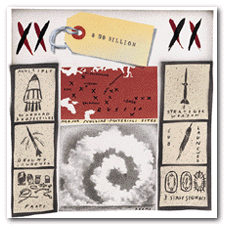Main Menu · Search · Current Issue · Contact · Archives · Centennial · Letters to the Editor · FAQs
![]()
Main Menu ·
Search · Current Issue · Contact · Archives · Centennial · Letters to the Editor · FAQs

| Gone Fission | High Flying |
| Harvard Men as Alcoholics | Bacterial Revenge |
| The Fall of the House of Ashes? | Cuisine Before Forks |
| E-mail and Web Information | |

![]()
The cold war is over. and to the victor goes the bill? After spending billions of dollars arming for nuclear Armageddon, the United States must now spend billions more to preserve the peace, says Dillon professor of government Graham Allison '62, Ph.D. '68, director of the Center for Science and International Affairs (CSIA) at the Kennedy School of Government. What Allison proposes will confound those who thought the collapse of the Soviet empire made the world more stable and a "peace dividend" possible. In a new book, Allison and CSIA colleagues Owen Cote '82, Richard Falkenrath, and Steven Miller say the Soviet denouement has left tons of weapons-grade nuclear material vulnerable to theft and eventual use by terrorists or rogue states such as Iraq, Libya, or North Korea.
Their solution? Buy the stuff and quickly ship it to the United States for safe storage. The cost? A cool $30 billion, roughly equivalent to the entire B-2 bomber or Trident nuclear submarine programs.
For those who balk at the price tag or question why U.S. taxpayers should pay twice for a war they won, Allison presents a horrifying alternative. Six times since 1991, amateur thieves have tried to sell weapons-usable nuclear material smuggled out of Russia. Although each attempt was thwarted by police in Europe, Allison says it's only a matter of time before stolen nuclear material becomes the terrorist weapon of choice. Had the bomb detonated at New York's World Trade Center contained Russian uranium, lower Manhattan-from Wall Street up to Gramercy Park-would have been leveled.
"It's a shocker," Allison says. "Actually, the likelihood of a million Americans being killed by a nuclear explosion has gone up, although now the likelihood of 100 million being killed [in a nuclear war] has gone down, and we should give great thanks for that."
The new book, Avoiding Nuclear Anarchy: Containing the Threat of Loose Russian Nuclear Weapons and Fissile Material (MIT Press), details the astonishing lack of control over nuclear material in today's disintegrating Russian society. Ironically, the police state of the former Soviet Union was, in some ways, a safer place. Borders were tightly guarded and internal security was maintained. But after the Soviet breakup in 1991, Russian central control systems fell apart. "Everything of value is for sale or can be stolen," Allison asserts.
In the midst of this chaotic society, rocked by civil wars and Mafia-style corruption, enough nuclear material to make 100,000 weapons is spread all over the map. Roughly 800 to 1,200 tons of highly enriched uranium and another 200 tons of plutonium are held in a vast nuclear "archipelago" of several hundred sites, including storage depots, navy bases, and abandoned civilian research labs-most of which have less security than any major U.S. airport. While security is slowly improving, many of these facilities remain little more than fenced-in warehouses where protection is "questionable at best, nonexistent at worst," Allison reports. The sites often lack basic control systems such as electronic monitoring or alarms. Because many guards and nuclear workers have not been paid in months, bribery may be the cheapest way to obtain the next atom bomb.
But Allison's most astonishing finding may be that Russia has no accurate accounting for its enriched uranium and plutonium stockpiles. In 1994, when the U.S. government shipped 600 kilograms of enriched uranium from Kazakhstan for safe storage at a Department of Energy plant in Oak Ridge, Tennessee, Russian authorities didn't know the stockpile existed, even though it was held at a former Soviet naval facility. And when U.S. officials had tallied the Kazakh uranium, they found 4 percent more than local authorities, using their own standard measuring techniques, had estimated. Extrapolated to the entire system, that 4 percent error rate amounts to about 4,000 nuclear bombs, a "truly prodigious quantity of weapons-usable material," Allison says.
The warnings of Allison and his colleagues are only starting to resonate in Washington. Although Allison has worked closely with Senators Sam Nunn of Georgia and Richard Lugar of Indiana, others in Congress and the Clinton administration are slow to grasp the gravity of the issue, he says. In 1991 Nunn and Lugar won passage of legislation that allocated about $400 million a year to help dismantle and secure nuclear weapons held in the former Soviet Union. But Allison says a much higher profile-and much more expensive-effort is needed. Although his proposal to spend $30 billion to buy Russian nuclear material may seem unrealistic in an era of budget cuts, it must be looked at in the context of a $250 billion overall defense budget, says Allison, who served as a special assistant to Ronald Reagan's Secretary of Defense, Caspar Weinberger '38, J.D. '41.
If a terrorist uses stolen Russian nuclear material in the United States, history will harshly judge the leaders who failed to prevent the threat, Allison warns. "It may be that it takes an incident to serve as a wake-up call," he says. "Although I hope and pray not."
John Dillon
Main Menu ·
Search · Current Issue · Contact · Archives · Centennial · Letters to the Editor · FAQs
![]()
Harvard Magazine · 7 Ware Street · Cambridge, MA 02138 · Phone (617) 495-5746